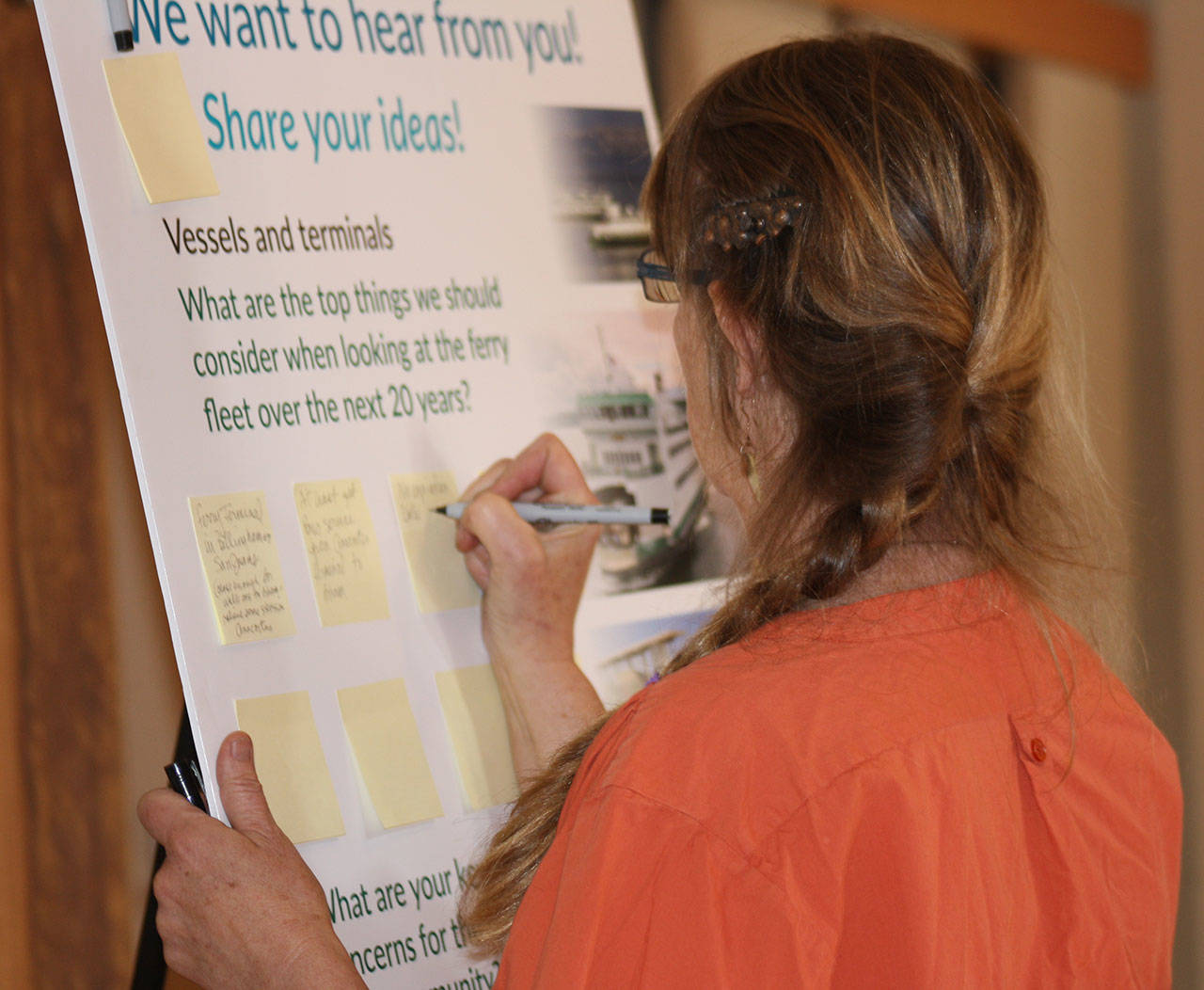Washington State Ferries staff are moving full steam into the next 20 years and want their plans and passengers’ expectations to be in the same boat.
“We want to make sure we address priorities and issues the public feels are important,” said Hadley Rodero with WSF communications.
By around 5 p.m. on Wednesday, May 2, WSF staff compiled 360 comments from passengers aboard the Anacortes to San Juan ferries routes and attendees at an open house located at Brickworks.
Those comments, as well as the ones riders can make online through May 24, will shape the draft of what WSF staff calls their long-range plan through 2040. The public can comment again before the draft is given to the Washington state Legislature by Jan. 1.
The Legislature funds WSF through the Washington State Department of Transportation’s budget, said Rodero, which is signed into effect by the governor.
However, at the May 2 meeting, local Roberta Kent said she feared state lawmakers wouldn’t hear the islands’ call for support.
“If you don’t have additional service, capacity and schedules, you’re not only short-shifting our state roads but our tourism industry,” she said, comparing the state-funded ferry routes to state-funded highways. “I think that Ferries will listen and pound on the door of the Legislature, but will the Legislature respond?”
Kent’s comments were fueled by what she described as an often unreliable schedule and an older fleet.
According to materials at the open house, 13 WSF vessels will reach, or be close to approaching, their maximum age of 60 by 2040, including four ferries on the Anacortes and San Juans route.
The WSF fleet size has stayed about the same since 2011, said WSF Senior Planning Manager Ray Deardorf, as the department staff have planned to replace vessels as opposed to adding them. However, newer boats like the Olympic class vessel the Samish, he added, have higher capacitates than older models.
The plan, said Rodero, is to encourage riders when vessels aren’t as full, so the current fleet can be used to its maximum volume, before adding additional boats.
Another way to spread ridership, said Rodero, is to charge more for peak sailings, such as summer weekends, to encourage traveling during slower periods, like summer weekdays. Seasonal fares, she suggested, could be altered by route, instead of today’s one seasonal surcharge applied to all WSF routes.
However, with older boats also comes reduced sailings when vessels are taken out of rotation for repairs.
Just last month, the Yakima, on the Anacortes and San Juans route, was taken out of service from April 22-25 due to a bent prop.
Last summer, vessels on the Anacortes and San Juans routes were also taken out of service for adjustments. According to Sen. Kevin Ranker, D-Orcas Island, in summer 2017, the islands experienced 22 days of disrupted ferry service due to vessel repairs, including days with reduced car capacities on replacement vessels during the islands’ peak tourism season.
WSF staff estimates a 37 percent increase in the Anacortes and San Juan Islands route by 2040. Yet, local current riders like Kent left the open house wondering if the islands’ passengers will be left high and dry with the new plan.
“How much of a priority is this marine transportation system?” she asked.
The public can comment on the plan before the draft is complete by visiting www.wsflongrangeplan.com.



